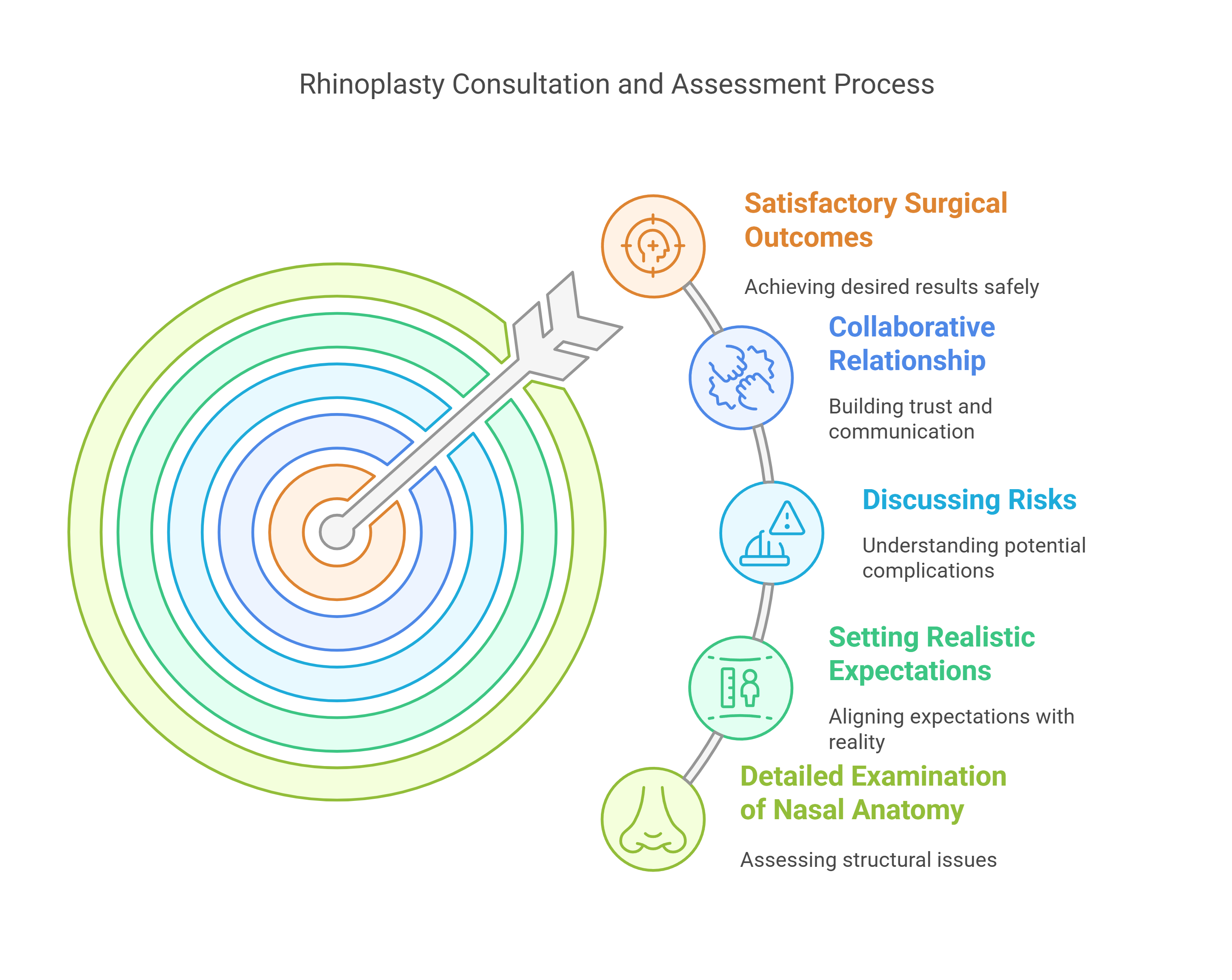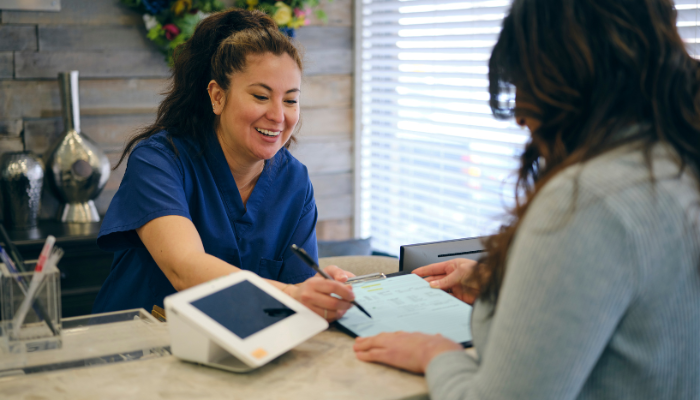If you’re considering a nose job, or rhinoplasty, understanding the costs involved is essential. The price can vary widely based on a number of factors, and knowing what to expect can help you prepare both financially and mentally.
This article will break down the costs associated with rhinoplasty, the different types of procedures available, and what you should keep in mind during the process.
Key Takeaways
- Rhinoplasty costs in the UK typically range from £4,000 to £10,000, depending on various factors.
- The type of procedure, whether open, closed, or non-surgical, significantly affects the overall price.
- Consultation and pre-operative assessments are crucial and usually included in the final cost.
- Recovery times can vary, and aftercare support is an important aspect of the procedure.
- Choosing an experienced surgeon can impact both the cost and the quality of results.
Understanding Rhinoplasty Costs

One of the first things on your mind is probably the cost. Let’s break down what you can expect to pay and what influences the final price.
Factors Influencing Price
Loads of things can affect how much a rhinoplasty costs.
- Where you live plays a big part.
- London prices will probably be different from somewhere more rural.
The type of rhinoplasty you need also matters. A straightforward reshaping will cost less than a more complex surgery to fix breathing problems. And, of course, the surgeon’s experience and qualifications are a big factor. More experienced surgeons often charge more, but you’re paying for their expertise.
Average Cost Range
In the UK, a rhinoplasty can set you back anywhere from £4,000 to £8,000. That’s a pretty wide range, I know. The lower end is usually for less complicated procedures, while the higher end covers complex surgeries with top surgeons.
It’s worth remembering that this is just an average. The best way to get an accurate idea is to have a consultation with a surgeon.
What Is Included in the Price
It’s not just the surgery itself you’re paying for. The price usually includes a few things:
- Surgeon’s fees
- Anaesthetist’s fees
- Hospital or clinic costs
- Pre-operative assessments
- Aftercare appointments
Make sure you know exactly what’s covered in the price you’re quoted. Some clinics might have hidden costs, so it’s always best to ask upfront. You don’t want any nasty surprises later on.
It’s important to remember that the cheapest option isn’t always the best. Your health and safety should be your top priority. Choose a qualified and experienced surgeon, even if they cost a bit more. It’s an investment in yourself and your well-being.
Types of Rhinoplasty Procedures
Rhinoplasty isn’t a one-size-fits-all deal. There are different ways to approach reshaping a nose, and the best option really depends on what you’re hoping to achieve. Let’s have a look at some common types.
Open Rhinoplasty Overview
Open rhinoplasty is often used for more complex cases. It involves making a small incision on the columella, the strip of skin between your nostrils. This allows the surgeon to lift the skin and have a really clear view of the underlying bone and cartilage.
It’s like opening up the bonnet of a car to get a good look at the engine. This approach is great for making significant changes or correcting major structural issues.
Closed Rhinoplasty Overview
Closed rhinoplasty, on the other hand, is performed entirely through the nostrils. No external incisions are made, which means no visible scarring. It’s less invasive than open rhinoplasty, but it also means the surgeon has a more limited view. It’s often used for more minor adjustments to the nose.
Suture Lift Rhinoplasty
Suture lift rhinoplasty is a minimally invasive procedure. It uses special sutures to lift and reshape the nose. It’s a good option if you’re looking for subtle changes without going under the knife.
Recovery time is generally quicker, but the results might not be as dramatic or long-lasting as with traditional rhinoplasty.
Consultation and Assessment Process

Initial Consultation Details
The first step is usually an initial consultation. This is where you’ll meet with the surgeon to discuss your goals, medical history, and any concerns you might have. Think of it as a getting-to-know-you session for your nose and the surgeon.
They’ll examine your nose, both inside and out, and might even take some photos to help with planning. It’s a good chance to ask all those burning questions you’ve been compiling. Don’t be shy – it’s your nose we’re talking about.
Pre-Operative Assessments
If you decide to move forward, there’ll be some pre-operative assessments. These are important to make sure you’re a good candidate for surgery and to plan the procedure properly. This might include:
- Blood tests: To check your overall health and make sure there are no underlying issues.
- Nasal endoscopy: A tiny camera is used to look inside your nose and check the structure.
- Imaging: Sometimes, a CT scan might be needed to get a detailed view of your nasal bones and cartilage.
These assessments help the surgeon understand your anatomy and identify any potential problems before the actual surgery.
Post-Consultation Expectations
After the consultation, you should have a clear idea of what to expect from the surgery. You’ll likely receive a detailed treatment plan outlining the proposed changes, the type of rhinoplasty recommended, and the potential risks and benefits. It’s normal to feel a mix of excitement and nervousness at this stage.
Take some time to process all the information and don’t hesitate to reach out to the surgeon’s office if you have any further questions. You’ll probably have a two-week ‘cool off’ period to really think about it.
It’s important to remember that rhinoplasty is a big decision, and it’s okay to take your time. Make sure you feel comfortable and confident with your surgeon and the proposed plan before moving forward.
Recovery and Aftercare Considerations
The surgery is only part of the journey. What happens after is just as important for getting the results you want. Let’s talk about what you can expect during recovery and how to make it as smooth as possible.
Typical Recovery Timeline
Okay, so everyone heals at their own pace, but here’s a general idea of what to expect. In the first week, you’ll probably have a splint and some swelling. Bruising is also pretty common. Don’t panic, this is all normal! You’ll need to take it easy, avoid strenuous activities, and sleep with your head elevated.
After about a week, the splint comes off, and you’ll start to see some of the initial results, though there will still be swelling. The majority of the swelling will subside over the next few weeks, but it can take several months, even up to a year, for the final results to fully appear. Patience is key here!
Aftercare Support Services
Your surgeon should provide you with detailed aftercare instructions. This will include things like how to clean the incision, what medications to take (if any), and when to come back for follow-up appointments. Don’t be afraid to ask questions! It’s important to understand everything clearly.
Some clinics also offer additional support services, such as video consultations or even recovery packages that include things like lymphatic drainage massage to help reduce swelling.
Managing Expectations During Recovery
It’s really important to have realistic expectations about the recovery process. As I said, there will be swelling and bruising, and it can take time to see the final results. Don’t get discouraged if you don’t look exactly like you imagined right away.
Also, be sure to follow your surgeon’s instructions carefully. This will help to minimise complications and ensure the best possible outcome. And remember, your surgeon and their team are there to support you throughout the entire process.
It’s normal to feel a bit anxious or self-conscious during the recovery period. Try to focus on the positive aspects of your decision and remember why you wanted the surgery in the first place. And don’t hesitate to reach out to friends, family, or a therapist if you’re struggling emotionally.
Choosing the Right Surgeon
Choosing a surgeon for rhinoplasty is a big deal. It’s not just about the money; it’s about your health and happiness. You want someone who knows what they’re doing and who you can trust. Let’s break down what to look for.
Importance of Surgeon Experience
Experience really matters. You want a surgeon who’s done loads of rhinoplasties. It’s like anything else – the more you do it, the better you get. Look for someone who specialises in rhinoplasty, not just general plastic surgery. They’ll have a better understanding of the nuances of the procedure and be more likely to give you the results you’re after.
Questions to Ask During Consultation
Your consultation is your chance to grill the surgeon. Don’t be shy! Here are a few questions to get you started:
- How many rhinoplasties have you performed?
- Can I see before-and-after photos of your patients?
- What are the risks associated with this procedure?
- What’s your approach to achieving the results I want?
- What kind of aftercare do you provide?
It’s important to feel comfortable with your surgeon and confident in their abilities. If something doesn’t feel right, don’t be afraid to get a second opinion.
Evaluating Surgeon Credentials
Make sure your surgeon is properly qualified and registered. Check that they’re on the General Medical Council (GMC) specialist register and have a licence to practise. Membership in professional organisations like the British Association of Plastic, Reconstructive and Aesthetic Surgeons (BAPRAS) or the British Association of Aesthetic Plastic Surgeons (BAAPS) is also a good sign. Don’t be afraid to do your homework and verify their credentials. It’s your face, after all!
Financing Options for Rhinoplasty

Let’s be honest, rhinoplasty can be a significant investment. But don’t let the initial cost deter you from exploring this life-changing procedure. There are several ways to make it more manageable. Let’s explore some common financing routes.
Payment Plans Available
Many clinics now provide payment plans to help spread the cost of your rhinoplasty over a more extended period. These plans often involve paying an initial deposit, followed by monthly instalments. The availability and terms of these plans can vary significantly between clinics, so it’s worth doing your research.
Here’s what you should consider:
- Interest Rates: Check if the plan includes interest, and if so, what the APR (Annual Percentage Rate) is. A lower APR means less you’ll pay overall.
- Repayment Period: How long do you have to pay off the balance? Longer periods mean lower monthly payments, but you’ll pay more interest in the long run.
- Eligibility: What are the requirements to qualify for a payment plan? Some clinics may require a credit check or proof of income.
Insurance Coverage Considerations
Generally, insurance doesn’t cover rhinoplasty when it’s solely for cosmetic reasons. However, there are exceptions. If the procedure is medically necessary – for example, to correct breathing problems caused by a deviated septum or to repair damage from an injury – your insurance might cover part or all of the cost.
To find out if your insurance will cover any portion of your rhinoplasty, you’ll need to:
- Consult with your insurance provider: Ask them specifically about their coverage policies for rhinoplasty and what documentation they require.
- Obtain a referral from your GP: A referral can strengthen your case for medical necessity.
- Get a detailed quote from your surgeon: This will help your insurance company assess the potential costs.
It’s important to remember that even if your insurance covers part of the cost, you’ll likely still be responsible for deductibles, co-pays, and any expenses not covered by your plan.
Understanding Financing Terms
Before committing to any financing option, it’s vital to fully understand the terms and conditions. This includes:
- Interest rates and fees: As mentioned earlier, pay close attention to the APR and any additional fees, such as application or late payment fees.
- Repayment schedules: Know exactly when your payments are due and how much they will be.
- Prepayment penalties: Can you pay off the loan early without incurring a penalty?
- Default clauses: What happens if you miss a payment or are unable to repay the loan? Understanding these clauses can help you avoid potential financial problems down the line.
Consider this example of potential monthly payments for different types of rhinoplasty:
| Procedure | Guide Starting Price | Monthly Payments over 12 months | Monthly Payments over 60 months |
|---|---|---|---|
| Ethnic Rhinoplasty | £6,000 | £500.00 | £100.00 |
| Non-Surgical Rhinoplasty | £500 | £41.66 | £8.33 |
| Septoplasty | £4,000 | £333.33 | £66.66 |
| Suture Lift Rhinoplasty | £2,000 | £166.66 | £33.33 |
| Tip Plasty | £4,900 | £366.66 | £102.31 |
| Alar Base Reduction | £5,500 | £416.66 | £116.26 |
Conclusion
The cost of rhinoplasty can vary quite a bit, depending on several factors like the surgeon’s experience, the complexity of the procedure, and what’s included in your package. It’s essential to remember that while price is important, the quality of care and the expertise of your surgeon should be your top priorities.
If you’re considering this procedure, take the time to research, consult with professionals and as a bonus, you can Book a FREE consultation HERE. They can help you understand the costs involved and what to expect. Ultimately, investing in your appearance and well-being is a personal journey, and with the right information, you can make a choice that feels right for you.
Frequently Asked Questions
What is the typical cost of a rhinoplasty?
The cost of a rhinoplasty can vary widely, usually ranging from £4,000 to £10,000 depending on various factors.
What factors affect the price of a nose job?
Several elements can influence the price, including the surgeon’s experience, the complexity of the procedure, and any additional treatments required.
Does insurance cover rhinoplasty?
Insurance may cover rhinoplasty if it’s deemed medically necessary, such as for breathing issues, but typically does not cover cosmetic procedures.
How long does recovery take after rhinoplasty?
Recovery can take several weeks, but most people return to normal activities within 1 to 2 weeks, depending on the procedure and individual healing.
What is included in the cost of rhinoplasty?
The total cost usually includes the surgeon’s fees, anaesthesia, hospital stay, and follow-up appointments, but it’s important to confirm with the clinic.
Can I finance my rhinoplasty?
Yes, many clinics offer financing options or payment plans to help manage the cost of rhinoplasty.





